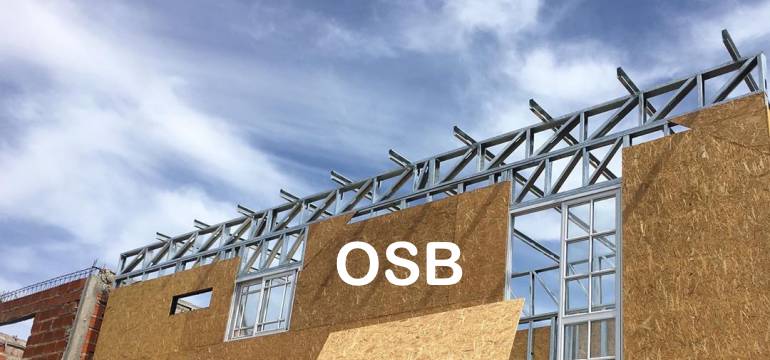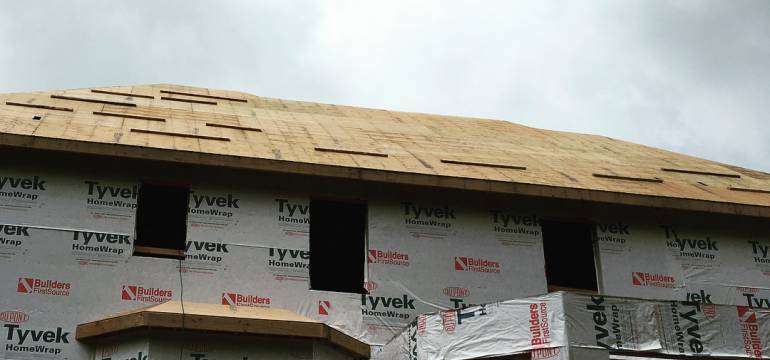Construction sites are famous for throwing around acronyms and letters that hold a great deal of meaning to homeowners. Many of these abbreviations that you hear will represent different types of plywood that are used for subflooring, roofing, and everything in between.
There are real differences between the various grades of plywood. Similarly, there are major differences between plywood and OSB. If you have to choose, you need to know the difference between CDX vs. OSB.
Don’t get frazzled and confused during the construction or repair of your home. Learn how to tell these two apart and how to use each one.
What is CDX Plywood vs. OSB?
Before you can really grasp the different ways to use CDX plywood vs. OSB, it can help to have a better understanding of what each of them is. The major distinction between these categories is the actual construction of the sheets.

CDX plywood is created by bundling layers of wood together. Each layer is placed on top of the other with the graining running in the opposite direction for the opposing layer.
This provides an inherent system of checks and balances that makes plywood a relatively stable material. Each layer is held in place by quality binders and adhesives.

On the other hand, OSB is produced very differently. Oriented strand board (OSB) combines wood chips, glue, and resin into the shape of a sheet of plywood and bakes them together.
It is often less expensive than CDX plywood because this manufacturing process doesn’t require the same costly veneers found on the front and back of CDX plywood. Depending on your location, you might find that it is roughly half the price of more traditional CDX plywood.
Moisture Differences: CDX Plywood vs. OSB
While the construction of each type is certainly different, that’s not the only difference between the two sheets. Determining how well they can hold up to water also determines what types of applications each one is best suited for.
In the case of CDX plywood, the X at the end denotes that it is rated for exposure. (Most people mistakenly think that it stands for “exterior”.) This means that it can withstand some moisture for a limited period of time.
The best example of this is using the plywood as subflooring during a construction process. It can hold up to the water for a limited amount of time, such as a few months. However, it needs to be covered and protected long-term.
Alternatively, OSB tends to be more waterproof than traditional plywood. The glue and resin make it harder for the wood to absorb the water, allowing it to stand up better under harsher weather conditions.
At the end of the day, you should only really use CDX plywood for interior applications or surfaces that will not see much water. It isn’t ideal to use for sheds, roofing, or other areas that see consistent rain. OSB is ideal for these applications where the CDX simply will not work.
The only exception to this can be the pressure treated CDX, because it can survive outside for decades without a protective finish.
What Type of Plywood is for the Roof?

One of the main areas that people tend to run into these issues is when they are trying to find plywood for their roofing. Should they go with OSB vs. CDX plywood for the roof? While some people do prefer to go with traditional plywood, many construction experts make the argument that OSB is better for roofing.
Because the adhesive and resin make it more difficult to absorb water, OSB is less likely to expand and contract with exposure to moisture. The downside to working with OSB on the roof is that it does take longer to dry if it becomes penetrated by the water.
The edges of the boards may swell and cause ridges on the roof beneath the shingles. It may also make it more likely that the roof will rot over time.
Despite these disadvantages, OSB is still commonly used for roofing. The National Roofing Contractors Association and the Asphalt Roofing Manufacturers Association both gave the thumbs-up of approval to use OSB for roof sheathing, provided that each sheet has approval from the APA – Engineered Wood Association.
While you may want to consider a different type of roof sheathing, CDX plywood is still not a great choice for your roof. It is only manufactured to hold up to water for a short period of time.
The protection of the shingles isn’t likely to be enough to prevent the plywood from becoming warped and delaminated over time. Not to mention, you don’t necessarily need to pay the veneer that you will get with the CDX grade of plywood. Since it will never be visible, it may just be a waste of money.
Making the Right Choice: CDX vs. OSB
Next time you find yourself in the middle of a construction project, make sure that you understand the real differences between CDX vs. OSB plywood. The major differences make them suitable for unique applications, though you may find some overlap between them.
In the end, many people opt for OSB because it is lower in price and more stable than CDX plywood.
However, you will want the finished veneer of CDX for projects like cabinets and furniture. Making the right choice is easy when you understand the inherent differences between these starkly distinctive types of materials!
- How to Cut Lexan - September 25, 2020
- Mineral Spirits vs. Mineral Oil - September 25, 2020
- Shellac vs. Polyurethane - September 24, 2020
